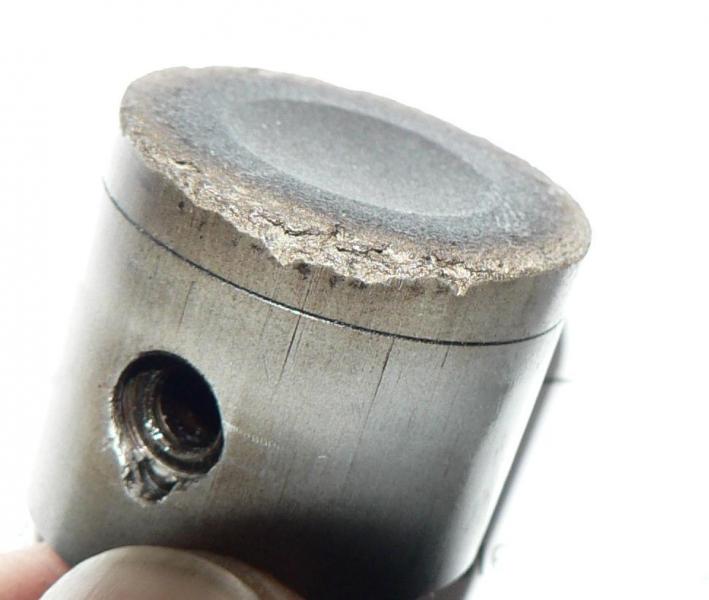So, what is a person to do with this shot blast effect(which I basically call it pitting)? I mean, if this effect doesn't effect compression - due to the pitting being localized towards the middle of the piston, then is there anything you could do to clean it up. I was thinking about usings wet-sand @ 800, but I don't want to change the clearance - tolerances by doing this. I have one motor with this, but the engine still works like new. I don't like my motors looking trashy(inside or out).
Ted
Once the pitting on the button has started and depending how deep it is, sanding on the button untill it is some what smooth is still problamatic unless U remove all of the pitted suface by machining on a lathe 1 to 2 thosands at a time untill the button is perfectly smooth and free of pitting. Because of the lower melting point of soft aluminum(between 560 and 660 deg) the temp at which it will start to soften is much lower, which is where the difference between the aluminum buttons VS. brass which has a melting point of around 900 hundred and a softening point around 775 depending on the type of material.
When the button starts showing a little bit of frost on it regardless of why it is detonating, the button is releasing very minute small pieces of aluminum into the combustion process becoming aluminum oxide and when burnt is raising the flame temp depending on the amout being released from the button first and if continued uncorected will pit the piston top and edges of the piston, "see Terry's pics:, which just increases the amout of aluminum being released into the combustion process which raises the conbustion temp even higher untill everything looks like aluminum termites have invaded the engine. I am currently trying to get an article done, hopefully sooner rather than later, on glow plug testing and part of the above info above will have definate relationship as it relates to detonation.
Hope this helps.
dick




